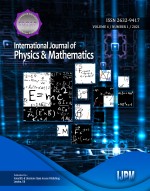DS18B20 sensor calibration compared with fluke hart scientific standard sensor
Keywords:
calibration, DS18B20 sensor, fluke hart, temperature chamberAbstract
The DS18B20 sensor calibration has been conducted using a fluke hart with a temperature chamber at the center for meteorology, climatology, and geophysics region III Denpasar. The calibration process is done by stabilizing the temperature in the chamber, then the temperature on the DS18B20 sensor and the standard thermometer in the chamber are read and compared. The setpoints used were 10 oC, 20 oC, 30 oC and 40 oC each set point was read four times. The results of the calculation of the standard deviation at each setpoint are 0,39 oC, 0,12 oC, 0,00 oC, 0,00 oC and the results of the uncertainty for each setpoint are 0,65 oC, 0,20 oC, 0,18 oC, 0,18 oC. The results of the DS18B20 sensor calibration using a fluke hart with a temperature chamber obtained the highest standard deviation value of 0,39 oC and the highest uncertainty value was 0,65 oC. This value indicates that the DS18B20 sensor calibrated with a standard tool at the 10 oC set point has not met the standard value applied by WMO, which is ±0.3 oC.
Downloads
References
Bamodu, O., Osebor, F., Xia, L., Cheshmehzangi, A., & Tang, L. (2018). Indoor environment monitoring based on humidity conditions using a low-cost sensor network. Energy Procedia, 145, 464-471. https://doi.org/10.1016/j.egypro.2018.04.093
Bamodu, O., Xia, L., & Tang, L. (2017). An indoor environment monitoring system using low-cost sensor network. Energy Procedia, 141, 660-666. https://doi.org/10.1016/j.egypro.2017.11.089
BMKG (2013). Metode Kalibrasi Meteorologi, Laboratorium Kalibrasi BMKG, Jakarta.
Bohórquez, M. A. M., Gomez, J. M. E., & Marquez, J. M. A. (2009). A new and inexpensive temperature-measuring system: Application to photovoltaic solar facilities. Solar Energy, 83(6), 883-890. https://doi.org/10.1016/j.solener.2008.12.007
Chan, Y. (2011). Sistem Pengukuran Teknik, Universitas Darma Persada, Jakarta.
Dhofir, A. (2014). Pengukuran Suhu Termometer, Universitas Muhammadiyah Malang, Jawa Timur.
Frei, M., Deb, C., Stadler, R., Nagy, Z., & Schlueter, A. (2020). Wireless sensor network for estimating building performance. Automation in Construction, 111, 103043. https://doi.org/10.1016/j.autcon.2019.103043
Galiancoli, D. (2001). Fisika Edisi Ke-5 Jilid 1, Erlangga, Jakarta.
Kapen, P. T., Mohamadou, Y., Momo, F., Jauspin, D. K., Kanmagne, N., & Jordan, D. D. (2019). Development of a neonatal incubator with phototherapy, biometric fingerprint reader, remote monitoring, and heart rate control adapted for developing countries hospitals. Journal of Neonatal Nursing, 25(6), 298-303. https://doi.org/10.1016/j.jnn.2019.07.011
Lewis, A. J., Campbell, M., & Stavroulakis, P. (2016). Performance evaluation of a cheap, open source, digital environmental monitor based on the Raspberry Pi. Measurement, 87, 228-235. https://doi.org/10.1016/j.measurement.2016.03.023
Nagy, Z., Rossi, D., Hersberger, C., Irigoyen, S. D., Miller, C., & Schlueter, A. (2014). Balancing envelope and heating system parameters for zero emissions retrofit using building sensor data. Applied energy, 131, 56-66. https://doi.org/10.1016/j.apenergy.2014.06.024
Simbeye, D. S., Zhao, J., & Yang, S. (2014). Design and deployment of wireless sensor networks for aquaculture monitoring and control based on virtual instruments. Computers and Electronics in Agriculture, 102, 31-42. https://doi.org/10.1016/j.compag.2014.01.004
Vega, F. A. O., Ríos, A. P. M., Saraz, J. A. O., Quiroz, L. G. V., & Damasceno, F. A. (2020). Assessment of black globe thermometers employing various sensors and alternative materials. Agricultural and Forest Meteorology, 284, 107891. https://doi.org/10.1016/j.agrformet.2019.107891
Published
How to Cite
Issue
Section
Copyright (c) 2021 International journal of physics & mathematics

This work is licensed under a Creative Commons Attribution-NonCommercial-NoDerivatives 4.0 International License.
Articles published in the International Journal of Physics & Mathematics (IJPM) are available under Creative Commons Attribution Non-Commercial No Derivatives Licence (CC BY-NC-ND 4.0). Authors retain copyright in their work and grant IJPM right of first publication under CC BY-NC-ND 4.0. Users have the right to read, download, copy, distribute, print, search, or link to the full texts of articles in this journal, and to use them for any other lawful purpose.
Articles published in IJPM can be copied, communicated and shared in their published form for non-commercial purposes provided full attribution is given to the author and the journal. Authors are able to enter into separate, additional contractual arrangements for the non-exclusive distribution of the journal's published version of the work (e.g., post it to an institutional repository or publish it in a book), with an acknowledgment of its initial publication in this journal.














